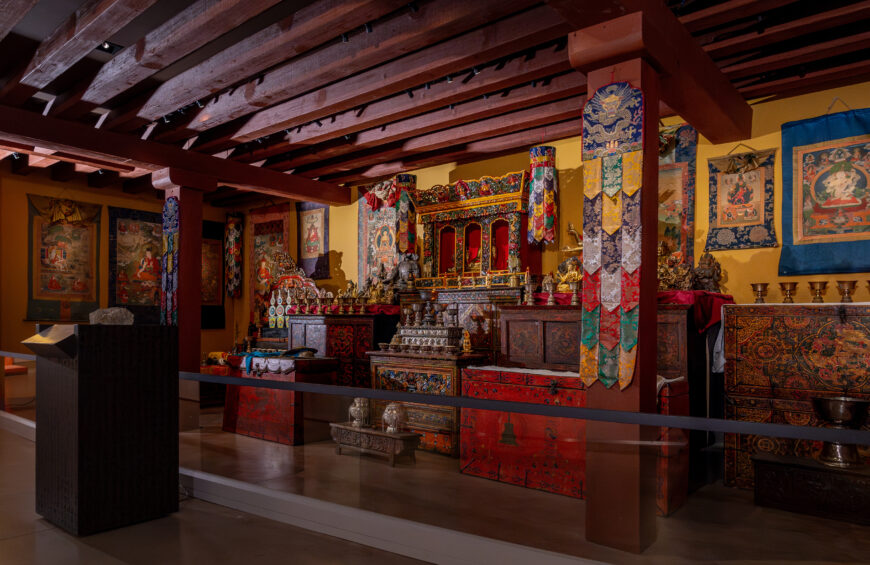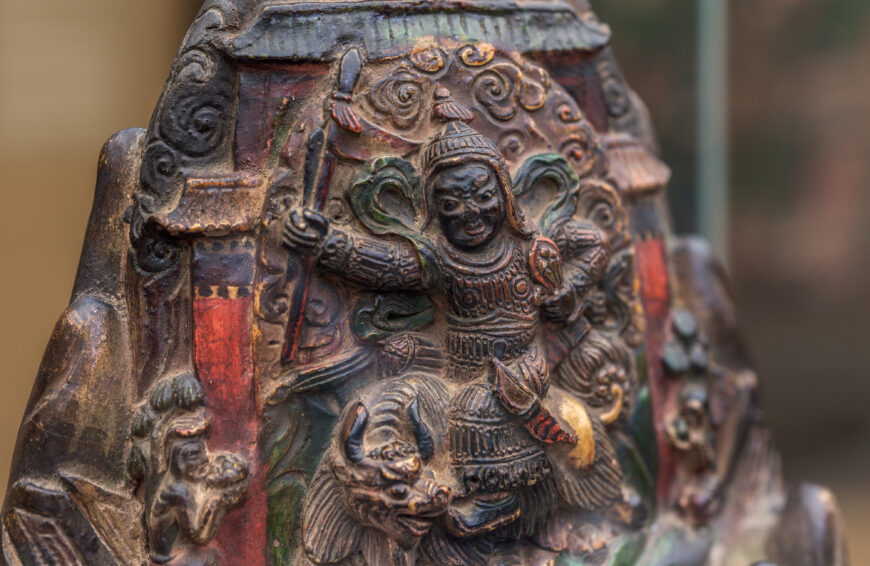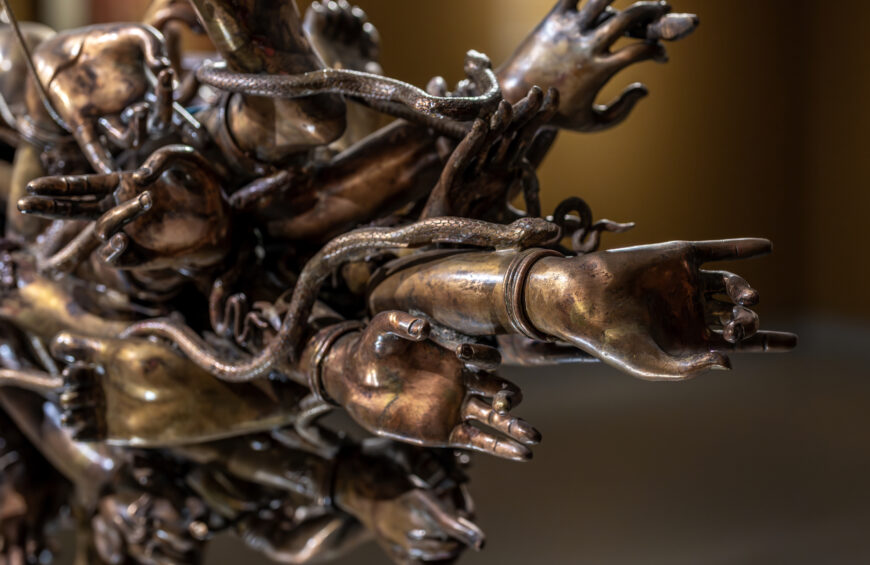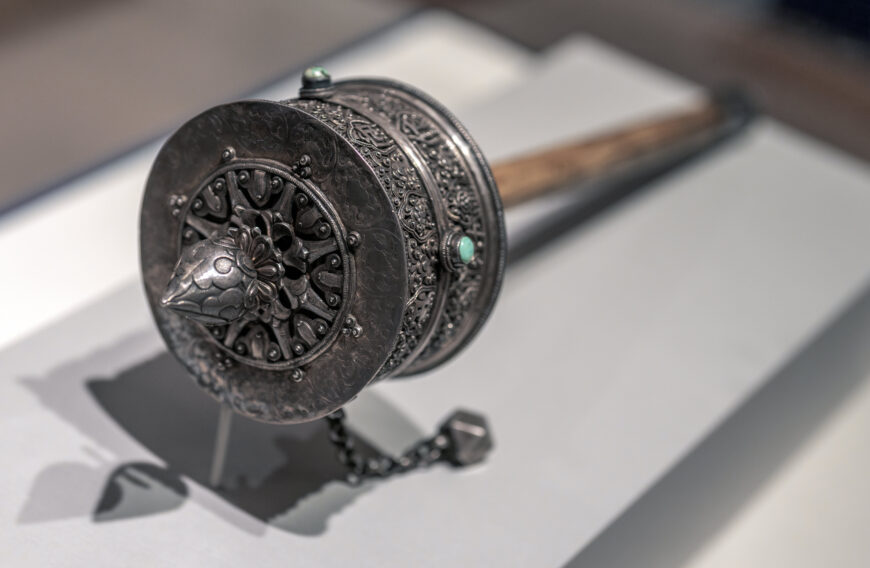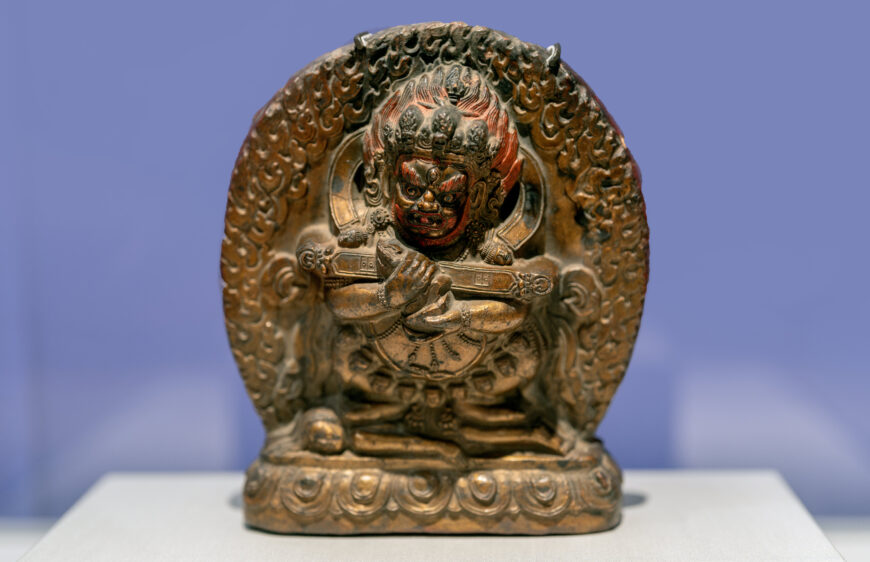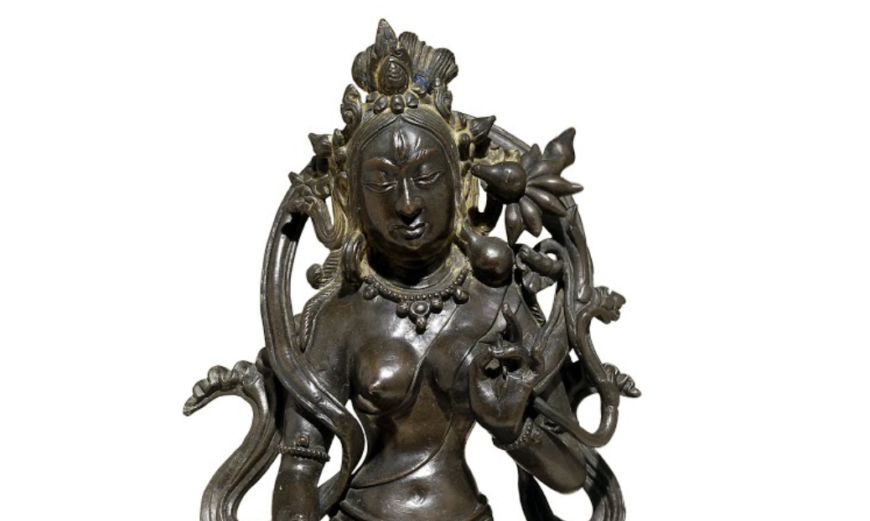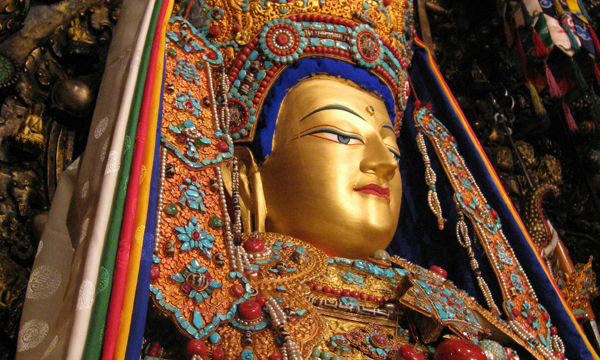A goddess of compassion, Tara is one of the most popular deities in Tibetan Buddhism and across the Himalayas.
Choying Dorje (attributed), Green Tara, 17th century, brass with pigments, 7-7/8 x 3-5/8 x 3-5/8 inches; Rubin Museum of Himalayan Art; C2005.16.3a-b (HAR 65425). Speakers: Dr. Karl Debreczeny, Senior Curator, Rubin Museum of Himalayan Art, and Dr. Beth Harris
Tara is one of the most popular deities in Tibetan Buddhism and across the Himalayas. Known as a goddess of compassion and a savioress, Tara rescues those in peril. The Rubin’s Senior Curator Dr. Karl Debreczeny and Smarthistory’s Dr. Beth Harris examine an exquisite sculpture of one of the many emanations of this revered goddess, Green Tara.
The Rubin Museum of Himalayan Art has teamed up with Smarthistory to bring you an “up-close” look at select objects from the Rubin’s preeminent collection of Himalayan art. Featuring conversations with senior curators and close-looking at art, this video series is an accessible introduction to the art and material culture of the Tibetan, Himalayan, and Inner Asian regions. Learn about the living traditions and art-making practices of the Himalayas from the past to today.
[music]
0:00:04.9 Dr. Beth Harris: We’re in the galleries at the Rubin Museum of Himalayan Art and we’ve gotten up close to a beautiful sculpture of Green Tara.
0:00:14.0 Dr. Karl Debreczeny: Tara is one of the most popular deities in Tibetan Buddhism and across the Himalayas. She’s a goddess of compassion, who’s also known to save from the Eight Fears.
0:00:25.5 Dr. Beth Harris: When I think about compassion, I usually think of Avalokiteshvara.
0:00:30.7 Dr. Karl Debreczeny: There is a close connection between Avalokiteshvara and Tara. One story goes that when Avalokiteshvara saw the suffering of the world, he cried two tears, and one formed into Green Tara and the other into White Tara.
0:00:44.5 Dr. Beth Harris: So there are many emanations of Tara. Here we’re looking at one specific type and that is the Green Tara. And one of the ways that we know that is by iconographic elements. She’s got her right leg hanging down, her right leg is a pendant. She holds out her right hand in a gesture of generosity, of compassion. She holds a lily and she’s covered in jewels. We see flowers on either side of her, and she sits on a double lotus.
0:01:13.4 Dr. Karl Debreczeny: All of these qualities we’re describing are found in standard depictions of her. However, this Green Tara is quite unusual and we can trace this to the hand of, or perhaps the workshop of Chöying Dorje, the 10th Karmapa, who was an extremely unusual artist, maybe one of the great artists of the Tibetan tradition.
0:01:33.8 Dr. Beth Harris: In so much Tibetan art, we don’t know the artist.
0:01:37.1 Dr. Karl Debreczeny: Because he was the head of the Karma Kagyu order of Tibetan Buddhism, we know quite a lot about his life. We have eight biographical or autobiographical writings, and through that we were able to trace both works by his hand, which are sometimes inscribed, and also works by his workshop, as well as later followers.
0:01:57.8 Dr. Beth Harris: So he was a prolific artist.
0:02:00.9 Dr. Karl Debreczeny: Due to the fact that he lived in exile for about 25 years, he was somewhat removed from that context, and it is then that he really becomes quite prolific as an artist.
0:02:11.9 Dr. Beth Harris: So sculpture, paintings, and also bringing in quite a range of influences into his art.
0:02:18.0 Dr. Karl Debreczeny: So the Karmapa is famously known to have drawn on Kashmiri art for his sculpture and from Chinese art for his painting. This kind of fleshy deep-waisted double lotus has prototypes that can be traced to the western Himalayas, especially in sculpture from the Swat region.
0:02:38.5 Dr. Beth Harris: And in fact there is a sculpture right here in New York at the Metropolitan Museum of Art, where we see very similar lotus throne.
0:02:46.8 Dr. Karl Debreczeny: And Tara has these thick plates of hair piled to one side, and if you look at the Metropolitan sculpture from the back, you’ll also see thick plates of hair. So we can start to see where the 10th Karmapa is drawing inspiration.
0:03:00.9 Dr. Beth Harris: Also very distinctive, it seems to me, are these very thin striations on her drapery, around her legs.
0:03:06.4 Dr. Karl Debreczeny: And this probably refers to textile patterns that you often see in western Tibetan and western Himalayan sculpture. Another aspect of his sculpture that seems to draw on the greater Kashmiri region are her jewelry. This emphasis on beads that you see both on the jewelry she wears and the pattern of flowers on her throne back. All of these are also drawn from a Kashmiri sculpture. But what’s so interesting here is that while that is seen in artworks in the greater Kashmiri region, here it’s quite exaggerated. If you look at her necklace, what are often very small or even partially incised, in this sculpture, they are bulbous baubles that clearly are lying on her chest. And also the size of her earrings is quite exaggerated. So you can see that while on the one hand he’s drawing on Kashmiri sculpture, he’s also making it his own.
0:04:03.2 Dr. Beth Harris: And one of the unique features of the 10th Karmapa’s art is the frequent appearance of birds.
0:04:11.0 Dr. Karl Debreczeny: The Karmapa was famous for his fondness of animals and especially birds. In fact, this was so well known that when people came to visit him, they would bring birds as offerings. And so his court was completely inundated with them. And here we see, above Tara, two birds nuzzling their beaks in a leafy bower. And here we see the artist diverging from iconographic stricture and expressing himself. And we can see in another sculpture in the Cleveland Museum, also attributed to the 10th Karmapa carved out of ivory of Avalokiteshvara. In his headdress, you’ll see a Buddha flanked by two birds. And so we can start to see a consistency in the imagery across the Karmapa’s artwork.
0:04:55.2 Dr. Beth Harris: And we see that also in his paintings.
0:04:58.9 Dr. Karl Debreczeny: You can find birds all over his paintings. And even in depictions of the Buddha, if you look closely above the Buddha’s head, you will often find a pair of birds, much like you see in the sculpture.
0:05:11.9 Dr. Beth Harris: There’s a later tradition that the 10th Karmapa could actually speak with birds.
0:05:17.6 Dr. Karl Debreczeny: The 10th Karmapa was so revered by later generations of Tibetan artists, especially within his tradition, that his sculptures are even copied into paintings. So for instance, if we look at a portrait of the 13th Karmapa, who was also an artist and interested in the works of the 10th Karmapa, you’ll see above him that the Green Tara seems to be modeled on a sculpture of Tara by the 10th Karmapa, much as we’re looking at today.
0:05:46.0 Dr. Karl Debreczeny: You can see that instead of being green, she’s gold as if she’s following one of these sculptures. And then if you look more closely at her lotus throne, you’ll see the same shape of elongated fleshy petals closely associated with the 10th Karmapa’s own works. Given Chöying Dorje’s exalted status, both as an artist, but also as a Karmapa, one of the highest incarnate lamas, it’s little wonder that his works were copied.


